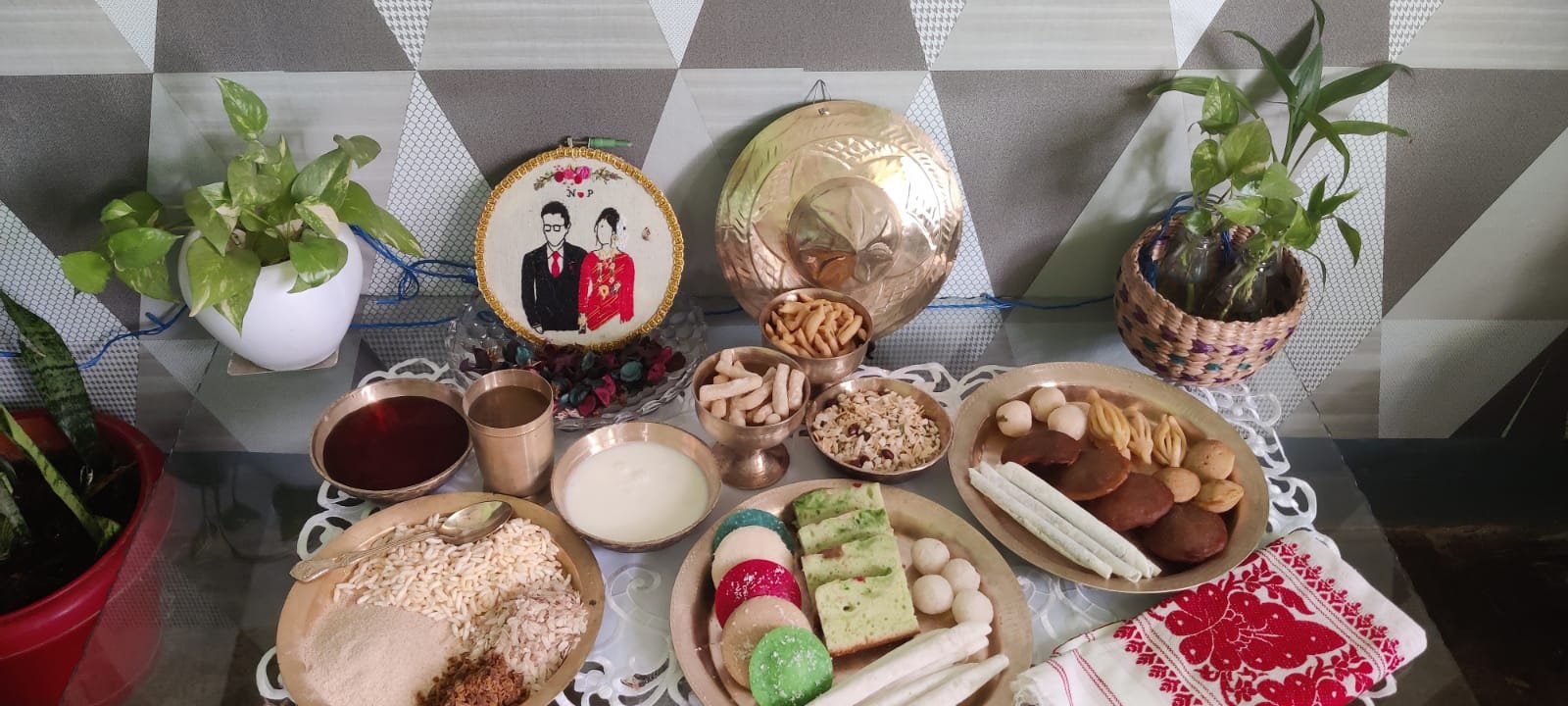An innocent inquiry
Children have the most unusual way of catching you off guard.
A few days back, on the morning of International Women’s Day, the husband and I were conversing about how Women’s Day is getting commercial rather than celebrating the genuine spirit of it. Our son while sketching a random cloud and mountain, asked me, ‘Mamma, do women worship only Goddesses or do they worship Gods as well?’ Well, the question was with which gender God do women share their dreams and desires? For a moment, I couldn’t decipher from where this was coming. Gender bias in worship was new to me. Yet, a nine-year-old had raised a valid question and because I didn’t answer it immediately, realizing his mother’s quandary, he jumped to the next.

Favouritism or bias?
‘Tell me, who is your favourite God?’ another bouncer.
Favouritism amongst Gods! Was God any food item or character from a novel or a film hero to talk of being a favourite? Not wanting to be the target of a third bouncer, I quickly replied to this one, ‘No. We can’t have favourite gods. God is God.’
‘But why can’t we? Didn’t you tell me the story where God, like a hero, fights off demons? If we can have a favourite hero, then why not a favourite God?’
The boy, bored with sketching the same old clouds and mountains or maybe tired of shaking his Mamma’s old, rudimentary beliefs, went out to check on the Mahashivratri celebrations.
The reformist in me wanted to deliberate on who was my favourite God. As a woman, when I talk of gender equality and feminism, do I believe in worshipping God with a specific gender?

Childhood memories of favourites
As a child, I loved the dhol tasha of Ganpati Utsav. The energy of the festival, the food, the coming together of families, and the musical bhajans kept me waiting for this festival year after year. Thus, Ganesha became my favourite deity. Ya, I have an answer. Ganesha is my favourite God!
Rise of a dilemma
Then a sharp voice in my head reprimanded me. ‘Doesn’t Ganesha have two wives? How does a feminist like you who is not in favour of bigamy love Ganesha?’ Though I didn’t like the audacity of the voice, it rang true to me. If not Ganpati, then who?
‘Mumma, see I have got Shira as prasad from Shiv Bhagwan! It is yum.’
The boy relished the sweet, sugary shira licking every grain of rava clung to his sticky fingers.
Suddenly, my ears became receptive to the Bum Bum Bhole chants. Walking over to the balcony, I immersed myself in the portrait of Lord Shiva who was being worshipped at a pandal right opposite my house.

Shiva – The answer
Long tresses, a sharp aquiline nose, eyes shut in a meditative trance, a bare blue chest, and a mere tiger’s skin that acted as loin cloth were the features that kept me glued to this hermit-like God. A God who doesn’t adorn jewels or even flowers. A bail leaf is sufficient to please him. Shiva is a God who represents man and woman both in his Ardhanareshwar form. Shakti with Shiva. Shiva is incomplete without his Shakti. This form acknowledges how vital she is to his living. Shakti occupies a position next to him, and not unlike Vishnu, whose wife sits at his feet. Respect and love co-exist in their divine marriage.
Observing the Shiva portrait, men and women making a beeline to pamper their favourite deity with a glass of milk, an answer was forming in my mind. The answer to who my favourite God is. God is a hero. Why can’t it be Shiva?
The androgynous hero
Muscular bhi hai aur popular bhi hai. And this Pappu, my Shiva, can dance as well. Calling him Pappu isn’t degrading his masculinity but considering him an approachable friend. Not God-like, kept on a pedestal, yet divine to be looked up to.
In this tranquil pondering, I see Shiva as the quintessential feminist. One who can dance, prepare bhang, get on a high and involve all his companions, male and female alike, in the celebration of being alive. By making the bhang a form of prasad that can be consumed by anyone who wishes to make merry, Shiva breaks biases that women can’t enjoy with a glass in their hand.

Faith In the strength of women
When I read about thousands of female kanwariyas making the pilgrimage on feet, I’m amazed at Shiva’s faith in his female devotee that she possesses the same physical stamina and energy as him to walk for hundreds of kilometres for days together to seek his blessings. These women kanwariyas on reaching one of the jyotirlingas in the month of Sawan, sing and dance to beats of the dumroo.
Shiva, too, rejoices on the taal of ghunroo and dumroo.
On the flip side of this wilderness, his meditative nature is evident. Calm and reflective. Patient yet enraged when provoked.
Shiva fought his father-in-law King Daksha because he offended his daughter Shakti leading to her suicide. Shiva, whose Shivling represents a phallus entering a vagina, makes his worshipers worship the yoni. It is the twelve jyotirlingas that are famous and fervently worshipped rather than any idol of Shiva. This signifies the power of a man and woman’s union, an act of the two coming together rather than one following the other.
The revelation
Shiva, who takes pride in letting the Ganga spring from the tangles of his long hair, her position supreme, on top of his head. He has positioned himself with Parvati on the holy land of Benaras, as Kashi Vishwanath. Not to protect the Ganga but to give her a friendly companion. Scriptures tell Shiva never fought on behalf of Ganga or Shakti or that matter Parvati. He believed in their strength for self-defence. Hence, maybe Shakti doesn’t appear docile or feeble. It is how her man talks of her to others reflects the woman she is.
Now, I was ready with an answer to who my favourite God is. I have the logical reasoning to support my answer and favouritism.
Shiva wins over my heart with his feminist perspective.
And by drawing mountains, was the son also trying to suggest the same?

















One Response
Remarkable article ✨